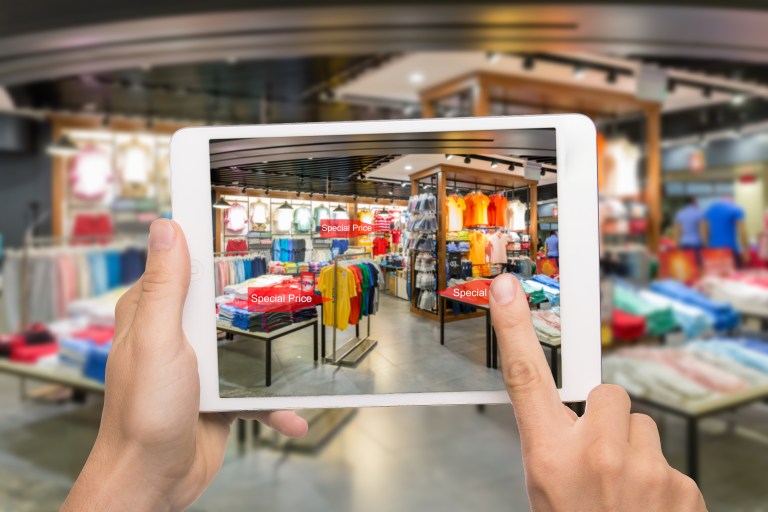Startup Spotlight: GPShopper And The Overdue Evolution Of Luxury Retail

Retail isn’t all about taking people’s money. Today, it’s also about telling a story and building an experience that makes customers want to shop with the brand again.
So, one might think it would be a no-brainer for luxury brands, which have such a legacy presence in the market, to be all over the latest storytelling modes, with exciting new ways to draw consumers into their rich and storied history.
Yet luxury brands have been slower than most other retailers to embrace digital innovation – for storytelling or for anything else. Startup GPShopper found that only 3 percent of luxury brand’s revenue was coming from digital storefronts back in 2010, and that percentage is only expected to climb to about 12 percent by 2020.
GPShopper, which develops mobile apps for retailers, has an idea why the technology uptake has been so slow in this market, as well as a vision for a brave new luxury retail world – and a plan to help make it happen.
“Luxury brands have a rich heritage and history of storytelling,” said GPShopper CMO Maya Mikhailov. “They saw technology as antithetical to that. Now, they are increasingly realizing that their customers are on digital platforms using digital tools. If they’re not there, they’re losing out to other brands who are. We believe 2018 will be a pivotal year for luxury to embrace digital technology.”
Technology as a branding and storytelling mechanism is a varied space right now, Mikhailov said. For some, the journey is as rudimentary as introducing a shoppable online presence. Yes, there are still major brands in 2017 that do not have a digital storefront.
For others, it’s more of a trial-and-error game as they endeavor to meet customers where they are by leveraging tools like Facebook Messenger, WeChat, Alipay and Snapchat (where Victoria Beckham and Louis Vuitton made splashes this past year).
Mikhailov said the value of direct messaging channels lies not so much in the bottom line as in the all-important customer experience. To provide the customer service that is demanded by discerning customers today, she said, retailers absolutely must be on those platforms.
“It’s a way to connect with customers,” Mikhailov said. “A luxury customer is a more demanding customer – as they should be at their price point. We’re in an interesting place with chat and chatbots. The hype cycle is ramping up. Luxury is well-positioned to use that – for customer service more than sales assist.”
Augmented reality has been growing as a way to help customers engage with products and brands from the safety of their own home.
For example, a customer may be interested in shopping at Sephora, but she feels overwhelmed in the store. She doesn’t know what some of the products are for or how to apply them. Others, like lipstick, are easy to understand but hard to try out: Once she’s put on one color, it becomes more difficult to try on others, and she may not feel comfortable going too bold in a public retail environment.
The makeup brand’s mobile app uses augmented reality to let customers try on a million different lipstick colors at home, then come into the store and test out only their favorites before making a purchase. It also offers AR tutorials on the customer’s own face to demonstrate how certain products should be used or how certain looks can be achieved.
Mikhailov feels that these capabilities make Sephora’s mobile apps one of the best on the market. But although GPShopper develops mobile apps, Mikhailov says apps are just the tip of the iceberg when it comes to digital strategies.
She says that retailers must think in terms of true omnichannel. That doesn’t mean just having different channels to reach customers at different points in their journeys – it means connecting those channels so that a loyal online shopper does not become a stranger when she walks into a brick-and-mortar store.
It means collecting data about the consumer, her habits and her preferences, said Mikhailov. If the customer walks out of a store with a $5,000 handbag, that wasn’t an impulse buy; she likely researched the purchase first.
To make such purchases more likely, Mikhailov said, brands must reach the customer during that learning phase and empower her with information. If she’s a loyal customer, reward that desirable behavior by giving her first-look information on new products.
Furthermore, associates should be able to identify the loyal customer as a VIP when she enters the store, including understanding her likes and dislikes so they can better serve her. If the customer tries on three dresses and hates one, that should be integrated into her profile. If she loves one but doesn’t buy it, she should be able to find it again later to complete the purchase.
“This customer-centricity is what makes digital natives like Everlane and Farfetch so powerful when you look at the next wave of retail,” Mikhailov said. “The way we experience stores is so static now. Retailers can’t reformat a store for every customer, but they can pair the store with a mobile app to achieve the same effect.”